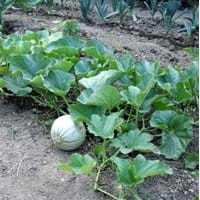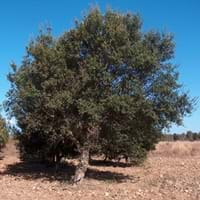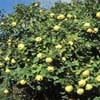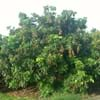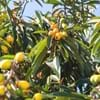Life Span
Annual
Perennial
Types
Not Available
Not Available
Habitat
along watercourse, Banks, Barren waste areas
Hills, Lower slopes, open Woodlands
USDA Hardiness Zone
Not Available
4-8
Sunset Zone
2a, 2b, 3a, 3b, 4, 5, 6, 7, 8, 9, 10, 11, 12, 13, 14, 15, 16, 17, 18, 19, 20, 21, 22, 23, 24
A3, 1a, 1b, 2a, 2b, 3a, 3b, 4, 5, 6, 7, 8, 9, 14, 15, 16, 17, 18, 19, 20, 21
Habit
Prostrate/Trailing
Upright/Erect
Flower Color
Yellow
Light Green
Flower Color Modifier
Bicolor
Not Available
Fruit Color
Green, Yellow green
Brown, Light Green, Lime Green
Leaf Color in Spring
Green
Green, Light Green
Leaf Color in Summer
Green
Green, Light Green
Leaf Color in Fall
Green, Yellow green
Red
Leaf Color in Winter
Light Green
Not Available
Leaf Shape
Heart-shaped
Lobed
Plant Season
Summer, Fall
Spring, Summer, Fall, Winter
Sunlight
Full Sun
Full Sun, Partial Sun, Partial shade
Growth Rate
Very Fast
Medium
Type of Soil
Loam
Clay, Loam, Sand
The pH of Soil
Neutral
Acidic, Neutral, Alkaline
Soil Drainage
Well drained
Well drained
Bloom Time
Early Summer, Summer, Indeterminate
Late Spring, Early Summer
Tolerances
Drought
Drought, Salt
Where to Plant?
Ground
Ground, Pot
How to Plant?
Seedlings
Seedlings
Plant Maintenance
Medium
Low
Watering Requirements
Reduce watering once fruit are growing, Water in the early morning hours
Average Water Needs, Requires regular watering, Requires watering in the growing season
In Summer
Lots of watering
Lots of watering
In Spring
Moderate
Moderate
In Winter
Average Water
Average Water
Soil pH
Neutral
Acidic, Neutral, Alkaline
Soil Type
Loam
Clay, Loam, Sand
Soil Drainage Capacity
Well drained
Well drained
Sun Exposure
Full Sun
Full Sun, Partial Sun, Partial shade
Pruning
Remove damaged leaves, Remove dead branches, Remove dead leaves
Not Available
Fertilizers
All-Purpose Liquid Fertilizer
No fertilizers needed
Pests and Diseases
Aphids, Cucumber beetles, Fusarium wilt
Red blotch, Spider mites
Plant Tolerance
Drought
Drought, Salt
Flowers
Showy
Insignificant
Flower Petal Number
Single
Single
Foliage Texture
Coarse
Medium
Foliage Sheen
Matte
Matte
Allergy
Dizziness, Mouth itching, Nausea
Asthma
Aesthetic Uses
Not Available
Landscape Designing
Beauty Benefits
Good for skin, Hair Conditioner, Stops hair loss
Not Available
Environmental Uses
Air purification
Air purification, Forms dense stands, Nesting sites for birds, No fertilizer, pesticides, or herbicides needed, Prevent Soil Erosion, Shadow Tree, Windbreak
Medicinal Uses
Antitussive, Digestive, Diuretic, Emetic, Febrifuge, Stomachic
Not Available
Part of Plant Used
Fruits, Seeds
Bark, Stem
Other Uses
For making oil for cosmetics
Used as firewood, Used for woodware, Used in biomass, Used in construction, Used in Furniture, Wood is used for ship building, Wood is used in construction, Wood log is used in making fences
Used As Indoor Plant
No
No
Used As Outdoor Plant
Yes
Yes
Garden Design
Edible, Fruit / Fruit Tree, Herb / Vegetable, Vine
Cutflower, Feature Plant, Foundation, Hedges, Mixed Border, Screening, Wind Break
Botanical Name
CUCUMIS melo 'Burpees Early Hybrid'
EUONYMUS phellomanus
Common Name
Crenshaw Melon
Cork Oak
In Hindi
खरबूजा
कॉर्क ट्री
In German
Zuckermelone
Cork Tree
In French
Melon
Arbre de Cork
In Spanish
Crenshaw Melon
Árbol de corcho
In Greek
Crenshaw Melon
Cork Tree
In Portuguese
Crenshaw Melon
Cork Tree
In Polish
Crenshaw Melon
Cork Tree
In Latin
Crenshaw Melon
Cork ligno
Phylum
Magnoliophyta
Anthophyta
Class
Magnoliopsida
Dicotyledonae
Order
Cucurbitales
Fagales
Family
Cucurbitaceae
Celastraceae
Clade
Angiosperms, Eudicots, Rosids
Angiosperms, Eudicots, Rosids
Tribe
Not Available
Mirini
Subfamily
Not Available
Mirinae
Number of Species
Not Available
Not Available
Season and Care of Crenshaw Melon and Cork Tree
Season and care of Crenshaw Melon and Cork Tree is important to know. While considering everything about Crenshaw Melon and Cork Tree Care, growing season is an essential factor. Crenshaw Melon season is Summer and Fall and Cork Tree season is Summer and Fall. The type of soil for Crenshaw Melon is Loam and for Cork Tree is Clay, Loam, Sand while the PH of soil for Crenshaw Melon is Neutral and for Cork Tree is Acidic, Neutral, Alkaline.
Crenshaw Melon and Cork Tree Physical Information
Crenshaw Melon and Cork Tree physical information is very important for comparison. Crenshaw Melon height is 30.50 cm and width 120.00 cm whereas Cork Tree height is 240.00 cm and width 180.00 cm. The color specification of Crenshaw Melon and Cork Tree are as follows:
Crenshaw Melon flower color: Yellow
Crenshaw Melon leaf color: Green
Cork Tree flower color: Light Green
- Cork Tree leaf color: Green and Light Green
Care of Crenshaw Melon and Cork Tree
Care of Crenshaw Melon and Cork Tree include pruning, fertilizers, watering etc. Crenshaw Melon pruning is done Remove damaged leaves, Remove dead branches and Remove dead leaves and Cork Tree pruning is done Not Available. In summer Crenshaw Melon needs Lots of watering and in winter, it needs Average Water. Whereas, in summer Cork Tree needs Lots of watering and in winter, it needs Average Water.
